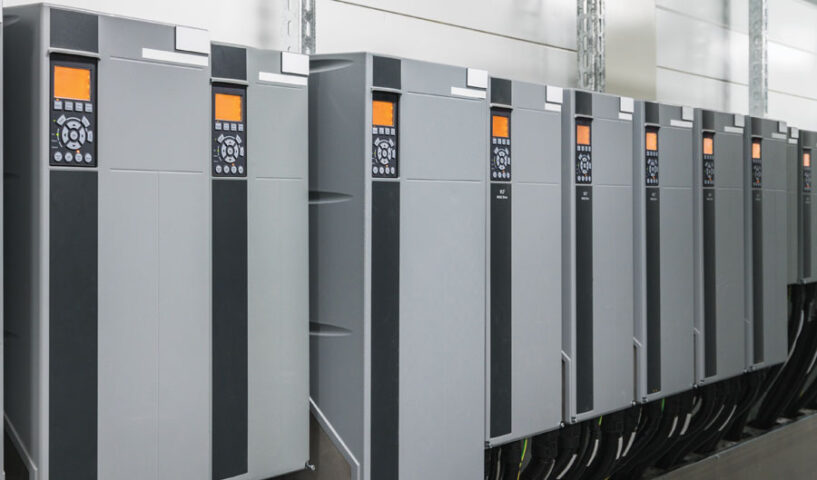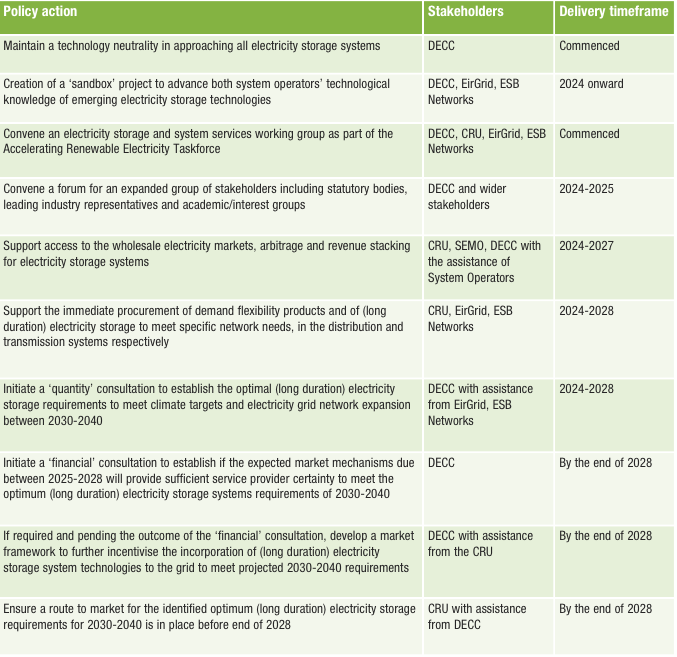
Significant opportunity to deliver renewable heating solutions using solid biomass
7th October 2024
Pathway to Ireland’s renewable gas network
7th October 2024Government outlines electricity storage future

The Electricity Storage Policy Framework 2024, prepared by the Department of the Environment, Climate and Communications (DECC), provides a roadmap for integrating electricity storage systems (ESS) into Ireland’s energy future.
The Electricity Storage Policy Framework 2024, published in July 2024, aims to harness the full potential of the role storage plays in supporting grid stability, boosting renewable energy usage, and providing economic opportunities.
The framework emphasises that ESS are vital to supporting Ireland’s transition to a renewable energy-led electricity grid. The framework highlights three core functions of electricity storage.
Electricity storage systems 10 policy actions
This policy framework presents 10 government actions to support the role of electricity storage systems in the energy transition. These actions are detailed below:
1. Demand flexibility: Electricity storage systems can store surplus renewable energy when generation exceeds demand and release it during peak times. This helps avoid wastage and reduces the need for costly fossil fuel generation during high-demand periods.
2. Strategic grid build-out: As the State’s renewable energy infrastructure grows, electricity storage can help reduce strain on the grid by supporting areas with weaker infrastructure. By deploying storage systems strategically, grid operators can prevent congestion and ensure electricity flows smoothly across the country.
3. System services: Electricity storage systems provide ancillary services like frequency and voltage regulation, ensuring that the grid remains balanced and stable even when renewable generation fluctuates. This is especially important as wind and solar, both non-synchronous power sources, are integrated into the grid.
Long-term growth
The framework recognises that the energy storage landscape is rapidly evolving. While Ireland currently relies primarily on battery storage and the Turlough Hill Power Station in County Wicklow, new technologies are emerging that could play a key role in the future. These new technologies include hydrogen storage, which can provide seasonal storage solutions, and other innovative technologies that could help bridge the gap between renewable generation and consumption.
By supporting a diverse portfolio of storage technologies, the Government aims to ensure that the grid remains resilient and flexible, even as the share of renewables in the energy mix increases.
European policy direction
The European Green Deal and RePowerEU both outline that electricity storage will play a “significant role” in achieving the EU targets of reducing greenhouse gas emissions by at least 55 per cent by 2030.
The EU’s Clean Energy Package states that electricity storage is a “key element” in the shift to renewables. It promotes market-based approaches to grid services, ensuring that storage systems are fairly compensated for the services they provide.
The Irish framework, as legally required, follows these principles, outlining that storage systems must be integrated into the grid in a way that aims to promote competition and lowers costs for consumers.
Implementation challenges
The framework outlines market saturation as a potential challenge to implementation. While short-duration storage systems – such as those providing power for between 30 minutes and four hours – are already playing an significant role in the grid, there is recognition that a growing number of similar projects could lead to oversupply. The framework addresses this by shifting focus toward long-duration storage, which is expected to play an increased role as renewable capacity increases.
Another challenge is the alignment of grid connection and planning processes. Under the current Enduring Connection Policy (ECP), electricity storage projects need to secure planning permission before applying for a grid connection. The framework advocates for streamlining these processes to accelerate the deployment of storage projects and meet Ireland’s climate goals.
Upon publication, Minister for the Environment, Climate and Communications Eamon Ryan TD said: “This policy framework sets out the present role of electricity storage in meeting our 2030 climate goals as well as addressing the future deployment of electricity storage in Ireland up to 2040.
“Electricity storage systems enhance and ensure security of electricity supply in the electricity network by storing excess renewable generation; managing peak demand; providing system services and supporting strategic grid build out.
“It is vital that Ireland exploits the full potential of electricity storage, and the publication of this policy framework is an important step to achieving this goal.”

